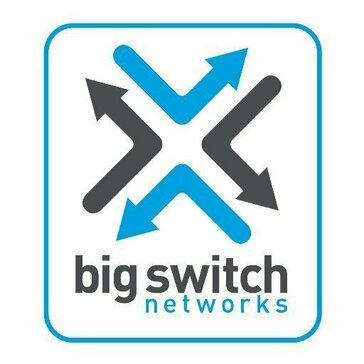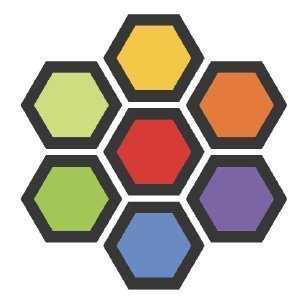Description

Istio

Converged Cloud Fabric
Comprehensive Overview: Istio vs Converged Cloud Fabric
Istio and Converged Cloud Fabric are different products that cater to distinct needs within cloud computing and network management. Here's a comprehensive overview of each, including their primary functions, target markets, market share, user base, and key differentiating factors:
Istio
a) Primary Functions and Target Markets:
- Primary Functions:
- Istio is an open-source service mesh designed to manage microservices within a distributed application environment. It provides a uniform way to manage, monitor, secure, and control microservices by offering capabilities such as traffic management, security (encryption, authentication, and authorization), observability (monitoring and logging), and policy enforcement.
- Target Markets:
- Istio targets enterprises adopting microservices architecture and Kubernetes environments. Its primary users are DevOps teams, cloud-native developers, and IT operations teams who require advanced service management for complex, distributed applications.
b) Market Share and User Base:
- Istio is one of the most popular service mesh solutions in the market. It has significant adoption among enterprises using Kubernetes, although precise market share numbers are not typically published for open-source tools.
- Major companies and cloud providers, such as Google, IBM, and Red Hat, support Istio due to its strong community and comprehensive feature set.
c) Key Differentiating Factors:
- Feature-Rich: Istio offers a rich set of features for service mesh management, making it suitable for complex application environments.
- Community and Ecosystem: Supported by major cloud service providers and a strong open-source community.
- Platform Agnostic: While commonly used with Kubernetes, it is not limited to a single platform.
Converged Cloud Fabric
a) Primary Functions and Target Markets:
-
Primary Functions:
- Converged Cloud Fabric (CCF) is a data center network fabric designed to simplify and automate network provisioning and management. It provides a unified platform for managing both on-premises and cloud-based network infrastructures, enabling seamless connectivity, virtualization, and policy-based control.
-
Target Markets:
- The primary market for CCF includes cloud service providers, large enterprise data centers, and organizations seeking to integrate their data center and cloud networking operations for better efficiency and scalability.
b) Market Share and User Base:
- Converged Cloud Fabric is a specific product typically offered by network technology vendors. As such, its market share and user base might not be as extensive as large open-source projects like Istio, but it caters to specific enterprise needs.
- Users often include enterprises looking for integrated solutions that streamline network management across hybrid environments.
c) Key Differentiating Factors:
- Integration Focus: CCF focuses on integrating data center and cloud environments, which is ideal for hybrid cloud use cases.
- Vendor-Supported: Often comes with dedicated support and more controlled updates compared to open-source solutions.
- Automation and Simplification: Emphasizes simplicity and automation in managing complex network infrastructures.
Comparing Istio and Converged Cloud Fabric
While Istio and Converged Cloud Fabric serve different functions within cloud and IT infrastructure, here’s how they compare:
- Scope: Istio is primarily a service mesh focusing on microservices, while CCF is a network fabric solution oriented towards broader data center networking.
- Market Adoption: Istio, being open-source and backed by big tech companies, might have broader adoption in terms of versatility and integration in Kubernetes-based systems. CCF is more niche but provides deep integration for specific vendor solutions.
- Use Case: Istio is best suited for cloud-native applications and microservice management, whereas CCF targets network optimization and simplification across multi-cloud and hybrid environments.
Contact Info

Year founded :
2017
Not Available
Not Available
United States
http://www.linkedin.com/company/istio

Year founded :
Not Available
Not Available
Not Available
Not Available
Not Available
Feature Similarity Breakdown: Istio, Converged Cloud Fabric
Istio and Converged Cloud Fabric are both technologies used in the realm of cloud computing and networking, but they serve different purposes. Istio is a service mesh, while Converged Cloud Fabric is a type of software-defined networking (SDN) solution. Despite their different primary functions, they share some core features and have distinct characteristics.
a) Core Features in Common
-
Network Management:
- Both systems are used to manage and optimize network traffic, albeit in different ways. Istio manages microservices traffic, while Converged Cloud Fabric optimizes data center and cloud network infrastructure.
-
Automation and Orchestration:
- They enable automation of network-related tasks, reducing manual intervention and improving efficiency. Istio automates networking for service communications, while Converged Cloud Fabric automates network provisioning and operations.
-
Security Features:
- Both offer security features to safeguard communications. Istio provides mutual TLS, authentication, and authorization for services. Converged Cloud Fabric ensures network security though policy enforcement and segmentation.
-
Scalability:
- Built to handle increasing loads, both solutions support scaling of operations—Istio in service ecosystems and Converged Cloud Fabric in network environments.
b) User Interface Comparison
-
Istio:
- Istio primarily uses Kubernetes command-line tools for configuration, although there are dashboards like Kiali to visualize service mesh data. It is developer-focused and integrates with Kubernetes environments.
-
Converged Cloud Fabric:
- Typically offers a more graphical user interface aimed at network administrators and operators, often with a dashboard that visualizes network topologies, configurations, and performance metrics.
The UI for Istio can be more technical considering its integration with Kubernetes, requiring knowledge of YAML and CLI, whereas Converged Cloud Fabric’s UI is generally more user-friendly with drag-and-drop capabilities for managing the network infrastructure.
c) Unique Features
-
Istio:
- Service Mesh Specifics: Istio uniquely provides advanced traffic management features such as circuit breaking, fine-grained traffic routing, and observability into service interactions.
- Telemetry and Tracing: It includes comprehensive telemetry and tracing capabilities for monitoring microservices without changing application code.
-
Converged Cloud Fabric:
- Network Virtualization: Focused on abstracting network components and providing a virtualized network environment across data centers.
- Integrated Hardware Support: Provides proprietary or integrated support for various networking hardware, making it easier to manage physical and virtual layers of the network concurrently.
- End-to-End Automation: Offers robust end-to-end automation capabilities for the entire network lifecycle, often beyond the scope of what Istio provides.
In summary, while Istio and Converged Cloud Fabric share some conceptual similarities in managing network communications and providing security, their application, interfaces, and unique features target different needs within the networking and cloud infrastructure domains.
Features

Not Available

Not Available
Best Fit Use Cases: Istio, Converged Cloud Fabric
Istio and Converged Cloud Fabric serve distinct roles in the realm of cloud and networking technologies, tailored to different needs and scenarios.
Istio
Istio is an open-source service mesh that helps manage microservices and their interactions in a cloud-native way. It provides a range of capabilities, such as load balancing, service-to-service authentication, and monitoring.
a) For What Types of Businesses or Projects is Istio the Best Choice?
- Microservices Architecture: Organizations transitioning to or operating on a microservices architecture benefit significantly from Istio. It provides a robust framework for managing complex service-to-service communications.
- Cloud-Native Applications: Companies adopting cloud-native application development practices will find Istio indispensable for feature sets like traffic management, security, and observability.
- Scalable and Dynamic Environments: Businesses that require rapid scalability and frequent deployments, such as SaaS providers, can leverage Istio for its comprehensive handling of service communications.
- Zero-Trust Security Needs: Organizations with high-security requirements can utilize Istio’s capabilities in service authentication, encryption, and policy enforcement.
d) Industry Verticals and Company Sizes:
- Tech Industry: Startups to large enterprises involved in cutting-edge technologies will benefit from Istio, especially those heavily invested in Kubernetes and containerized environments.
- Financial Services: Provides the necessary observability and security measures to comply with stringent regulatory requirements.
- Retail & Ecommerce: Helps manage traffic spikes and enhance reliability during peak shopping seasons.
- Telecommunications: Facilitates efficient load balancing and traffic routing, critical in high-demand scenarios.
Converged Cloud Fabric
Converged Cloud Fabric is a network and automation platform designed to enable private and hybrid cloud environments. It simplifies the management of network resources and enhances data center agility.
b) In What Scenarios Would Converged Cloud Fabric be the Preferred Option?
- Hybrid Cloud Deployments: When businesses need to integrate on-premises data centers with public cloud resources, Converged Cloud Fabric is ideal for seamless connectivity and management.
- IT Infrastructure Simplification: Organizations looking to streamline their network operations and reduce complexity in managing hybrid IT infrastructures should consider Converged Cloud Fabric.
- Data Center Modernization: Enterprises aiming to modernize their legacy data centers with a focus on automation and efficiency can leverage this platform to achieve those goals.
- Resource Optimization: Companies seeking to optimize the use of their network resources, ensure better performance, and reduce operational costs will find value in Converged Cloud Fabric.
d) Industry Verticals and Company Sizes:
- Large Enterprises: Particularly those with extensive IT infrastructures that span multiple data centers and cloud environments, such as in finance, healthcare, and manufacturing.
- Service Providers: Telecommunications and internet service providers looking for efficient network management and rapid deployment capabilities.
- Government and Public Sector: Agencies that require secure, compliant, and cost-efficient networking solutions.
- Educational Institutions: Universities and research centers that demand scalable and flexible network resources.
In summary, Istio is best for companies focusing on advanced microservices and cloud-native applications, where managing service interactions is vital. Converged Cloud Fabric, on the other hand, is ideal for businesses looking to streamline and optimize their network operations across hybrid cloud environments. Each caters to different sectors and organization sizes based on their specific infrastructural and operational needs.
Pricing

Pricing Not Available

Pricing Not Available
Metrics History
Metrics History
Comparing teamSize across companies
Conclusion & Final Verdict: Istio vs Converged Cloud Fabric
When comparing Istio and Converged Cloud Fabric, it's essential to consider their distinct characteristics and how they align with your organization's goals and infrastructure needs. Here's a detailed conclusion and final verdict based on your criteria:
a) Overall Value
Istio offers compelling advantages through its robust service mesh capabilities. It excels in environments where microservices are prominent, providing advanced traffic management, security, and observability features. If your organization operates heavily in a Kubernetes environment and requires sophisticated control over service-to-service communications, Istio presents superior value.
Converged Cloud Fabric (CCF) shines in scenarios where streamlined network management and automation, especially across hybrid or multi-cloud environments, are required. CCF simplifies networking with centralized control and supports seamless operations across cloud infrastructures.
Verdict: The best value is contingent on your specific use case. For organizations prioritizing microservices management and Kubernetes-native solutions, Istio is preferable. Conversely, for those needing optimal cloud networking and hybrid-cloud deployments, Converged Cloud Fabric offers better value.
b) Pros and Cons
Istio:
-
Pros:
- Granular traffic management capabilities.
- Enhanced security with mutual TLS and policy management.
- Comprehensive observability of service communications.
- Strong integration with Kubernetes.
-
Cons:
- Can be complex to initially set up and require significant maintenance effort.
- Potential performance overhead, especially if not optimally configured.
- A steep learning curve for teams not versed in service meshes.
Converged Cloud Fabric:
-
Pros:
- Simplifies network operations across multiple environments.
- Facilitates easier management of complex network architectures.
- Enhances agility in deploying cloud-native applications.
- Strong focus on automation and streamlined workflows.
-
Cons:
- May not provide the granular application-level insights offered by service meshes like Istio.
- Certain features might be redundant for organizations already utilizing comprehensive virtual networking solutions.
- Potential vendor lock-in if fully committing to their ecosystem.
c) Recommendations
-
Evaluate Needs: Organizations should first clearly outline their operational requirements and architectural goals. If your focus is microservices and you’re already embedded in the Kubernetes ecosystem, consider leaning towards Istio.
-
Consider Expertise and Resources: Assess your team’s skills and the potential learning curve associated with deploying and maintaining each solution. Istio may require more upfront training and adaptation.
-
Integration and Ecosystem: Recognize the complementary tools and existing systems you have. Istio integrates well within Kubernetes-native environments, while CCF provides broader network management solutions.
-
Trial Environment: Where possible, conduct proof-of-concept deployments for both solutions to understand the real-world implications on your operations, performance, and security.
In summary, the decision between Istio and Converged Cloud Fabric should be based on specific operational needs, the existing technology stack, and organizational priorities. Each tool offers unique advantages that cater to different aspects of cloud-native and network management paradigms.
Add to compare
Add similar companies



